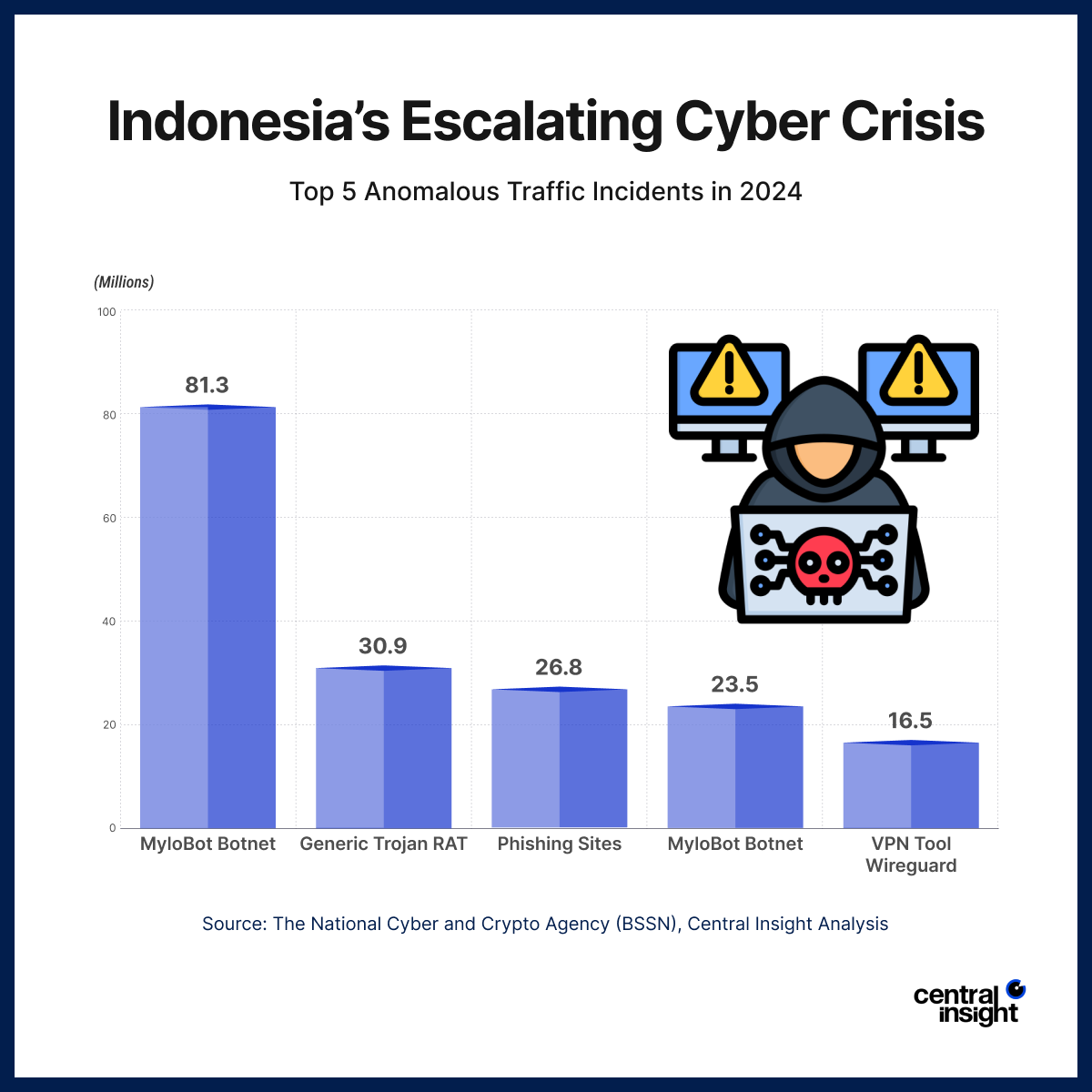Indonesia recorded a staggering 330.5 million anomalous traffic incidents in 2024, with the highest surge occurring in December. These anomalies signal an alarming increase in cyber threats, particularly targeting the government, transportation, and information and communications technology (ICT) sectors. One of the most severe incidents included a ransomware attack that crippled over 200 government agencies and exposed critical vulnerabilities in the nation’s digital infrastructure.
The Evolving Nature of Cyber Attacks: A Case Study

The ransomware, identified as a variant of LockBit 3.0 known as Brain Cipher, struck the National Data Center in Surabaya. The attack disrupted critical public services including immigration processing and e-visa systems. The hackers demanded a ransom of $8 million to restore access, effectively paralyzing portions of government operations and threatening national security.
This event has ignited serious concern among cybersecurity professionals and government leaders alike. The Indonesian government is now exploring the establishment of a dedicated Cyber Force under the military to defend against digital threats. This move signals a shift in perception: cyber defense is no longer merely an IT issue but a matter of national security.
What makes this particularly concerning is the diversity and sophistication of the attacks. Tools like the Mirai Botnet hijack Internet of Things (IoT) devices, while the Generic Trojan RAT provides hackers with remote control access to infected systems. MyloBot spreads through spam emails, while phishing sites trick users into divulging sensitive information. Even VPN tools like Wireguard have been exploited to conceal malicious activity.
With cyberattacks becoming more coordinated and state-level threats becoming increasingly probable, the need for a proactive, multi-layered defense strategy is urgent. Cybersecurity must be integrated into national policy, infrastructure planning, and organizational culture.








